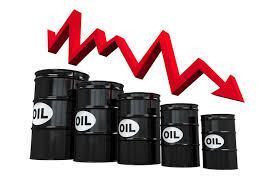U.S. oil declines 3% following a series of weaker forecasts

U.S. oil prices declines 3% or $1.39 to $44.90 a barrel on Tuesday, following a sequence of weak predictions on demand growth.
According to the International Energy Agency, a sharp go-slow in oil demand growth, combined with expanding inventories and increasing supply, means the market will be oversupplied at least through June of 2017.
The IEA’s comments come after an unprecedented weaker forecast from the Organization of the Petroleum Exporting Countries on Monday. OPEC also said the markets should expect a larger surplus in 2017 due to new fields in non-member countries and U.S. shale drilling.
Brent crude futures were trading down $1.26, or 2.61%, at $47.06 per barrel at 2:49 p.m. The U.S. West Texas Intermediate futures dropped $1.39, or 3%, to $44.90 a barrel. Eugen Weinberg, the Commerzbank head of commodities strategy said, “It seems the situation has deteriorated strongly in the eyes of OPEC as well as the IEA.” “I wouldn’t be surprised to see this price weakness continue for a while right now, because that was not on the cards, in our opinion.”
A stronger dollar also weighed on crude and other commodities denominated in the dollar, hence making them less affordable to people using other currencies such as the euro. U.S. equity markets declined more than 1%, adding to the weaker sentiment.
Positive Chinese data on industrial output growth for August failed to boost oil prices as the crude market remained in a profit-taking mode, traders suggested. China’s industrial output expanded fastest in five months as demand for products from coal to cars rebounded. This great rebound is due to increased government spending and a year-long credit and property boom.
Speculators in U.S. and Brent crude futures cut their long positions forecasts, axing the combined net speculative length in the two contracts by 80 million barrels, according to PVM Oil Associates.
Analysts expect U.S. government data on Wednesday to show a stockpile build of 4.5 million barrels in crude last week. The American Petroleum Institute, a trade group, is expected to release its own preliminary supply-demand report for last week at 4:30 p.m. (2030 GMT) on Tuesday.
Oil prices climbed in the previous session after uncertainty over a possible U.S. Federal Reserve interest rate hike in September weighed on the dollar.
Nevertheless, expectations of U.S. monetary changes before the end of 2016, coupled with the bearish demand outlook projected by the IEA, further weakened the market sentiment that the world’s largest oil producers might agree to cut output when they meet for talks in Algeria on Sept. 26-28.
According to David Thompson, executive vice-president at Powerhouse, a commodities-focused brokerage in Washington, “The idea of an oil production freeze makes even less sense if demand falls apart while U.S. monetary stimulus is being removed at the same time.”
